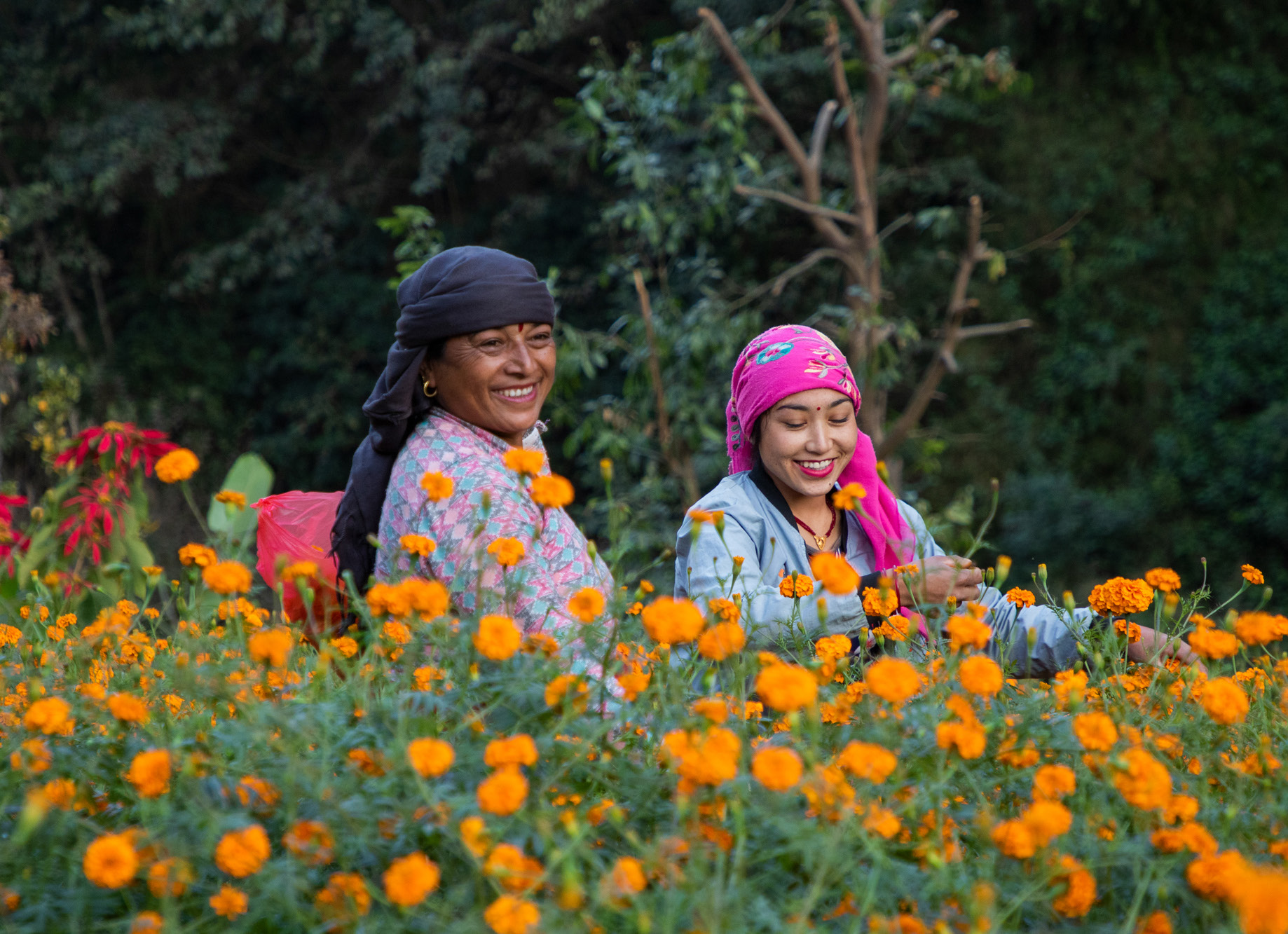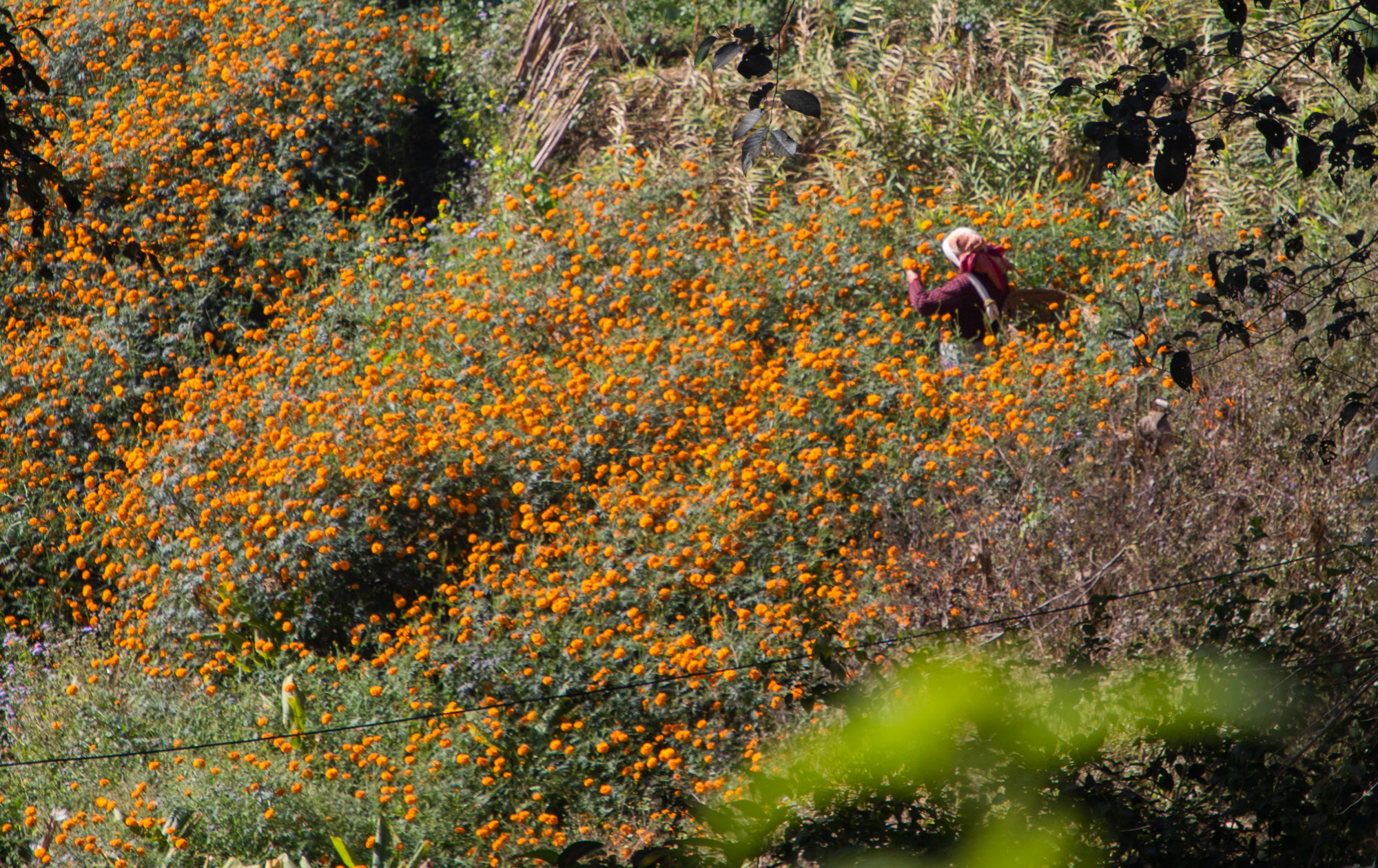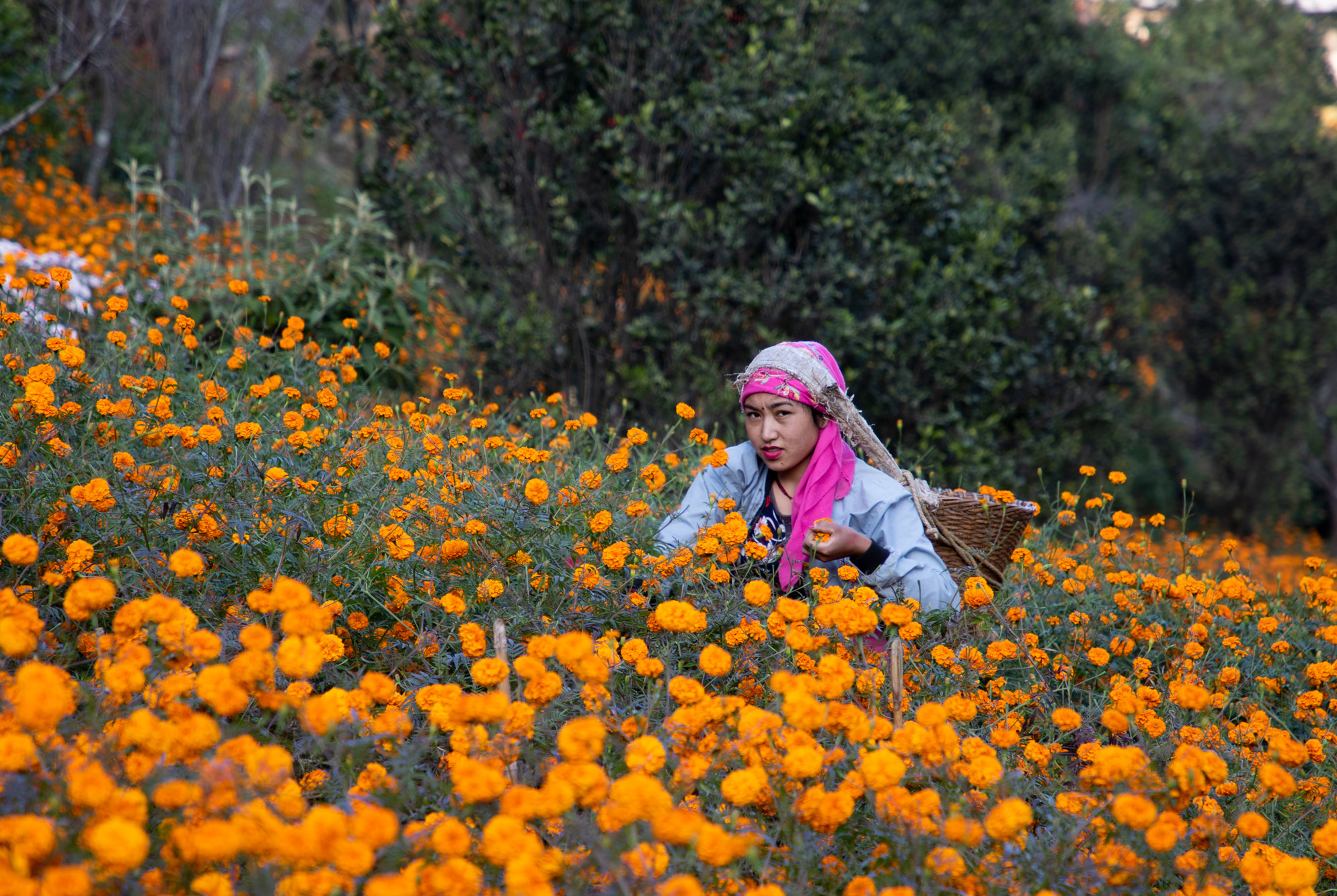Tihar, the festival of lights and flowers, is incomplete without sayapatri (marigold), makhamali (globe amaranth), and godavari (chrysanthemum).
Although Nepalis use a significant amount of flowers throughout the year, the demand is high especially during Tihar. But domestic production has been unable to meet demand, even in off-peak months.
Demand for flowers increases by around 15 to 20 percent every year in Nepal. So, to supply enough flowers in the market, professional florists often import flowers from India. As usual, this time too, they have prepared the logistics to bring flowers from India.
The Floriculture Association of Nepal (FAN), an NGO that studies the flower market, helps farmers and florists. It suggests that around 1.85 million garlands (usually a meter long) will be sold in the market this Tihar. Of them, around 1.5 million will be sayapatri, 0.3 million makhamali, and the remaining are of godavari.
Last year, due to the pandemic and the subsequent lockdown, the domestic production of commercial flowers was significantly low, and so was the demand. But things are different this time. The demand for flowers is estimated to have gone up by 15 percent over the previous two years. It is believed that around 15 percent of total demand will be met by imported flowers.

Nepali production could have met 90 percent of the total demand, but the recent unseasonal incessant rain destroyed matured flowers that were almost ready to be harvested for Tihar. “The Covid-19 pandemic has also heavily affected production,” says Biswomani Pokharel, general secretary of FAN.
Due to the risk of coronavirus, farmers didn’t invest as much in flowers as in previous years, which has led to a further decline in production. But the demand has increased. “The planting time was from February to August, the time when we experienced the deadly second wave, so the farmers didn’t take the risk,” he adds.
Prices are expected to rise this year as demand is high and more flowers have to be imported from elsewhere than the previous year. The price of one garland is expected to hover around Rs 80 to 100. It was Rs. 60 to 70 last year.
The flower business, which had been losing Rs 10 million daily due to the Covid-19 pandemic for a long time, is now churning out business worth around Rs 7 million a day. Every year, August to March is the busiest season for the market as flowers are in high demand during the wedding season.
Flowers worth Rs. 400 million are sold annually in Nepal. But internal production in off-seasons is still unsatisfactory.

Almost 65 percent of flowers are imported for occasions other than Tihar. “Nepali farmers are focused only on supplying flowers during Tihar, so domestic production is weak during other seasons,” says Sitaram Panta, owner of Fresh Flower Shop in Jawalakhel. “If the production capacity increases, we won’t have to depend on India.”
The climates of India and Nepal are similar, and Nepali florists could also produce and meet the demand here for all seasons. Uma Shankar Prasad, economist and member of the National Planning Commission, accepts that the government and concerned parties haven’t studied this subject.
“Floriculture is a part of agriculture and it has no visible contribution to the national economy, so none of the government departments have calculated the exact data of demand, production, consumption, and supply of flowers,” he says.
“Nepal, till date, has not considered flowers as cash crops.”
FAN has tentative data on floriculture, but the Nepal government is yet to conduct research on it. “Quality training, irrigation, technology, and futuristic seeds could help our farmers a lot,” says Panta. “We could eventually cut imports to zero if the concerned bodies help farmers on all-season farming.”
Along with the increase in demand for flowers, commercial floriculture has expanded to 28 districts, including Kathmandu, Lalitpur, Bhaktapur, Kaski, Chitwan, Gulmi, Palpa, and Morang. Nepal currently produces 450 species of flowers commercially. They are cultivated by 700 farmers in an area of about 157 hectares.













